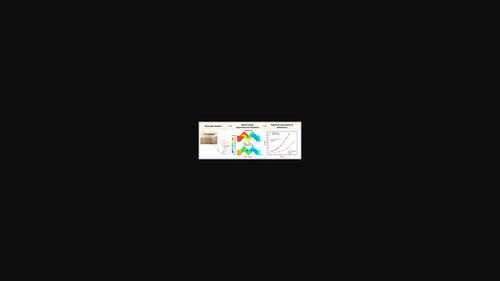当前位置:
X-MOL 学术
›
Can. J. Chem. Eng.
›
论文详情
Our official English website, www.x-mol.net, welcomes your feedback! (Note: you will need to create a separate account there.)
Multi-objective optimization of drainage-plates in wave-plate mist eliminators using experiment and data-driven modelling for lower water loss and energy requirement
The Canadian Journal of Chemical Engineering ( IF 2.1 ) Pub Date : 2022-07-16 , DOI: 10.1002/cjce.24558 Ya Tang 1 , Yuting Xu 1 , Chang He 2 , Yidan Shu 2 , Bing Jian Zhang 2 , Qing Lin Chen 2
The Canadian Journal of Chemical Engineering ( IF 2.1 ) Pub Date : 2022-07-16 , DOI: 10.1002/cjce.24558 Ya Tang 1 , Yuting Xu 1 , Chang He 2 , Yidan Shu 2 , Bing Jian Zhang 2 , Qing Lin Chen 2
Affiliation

|
Wave-plate mist eliminators are widely employed as gas–liquid separation devices to prevent the liquid escaping from thermal power plants or other cooling towers. In this study, the wave-plate mist eliminator with drainage plates was numerically analyzed and the effects between geometrical variables on two objectives, namely, pressure drop (ΔP) and separation efficiency (η), were revealed. Plate spacing, width, and length, as well as the relative position of the drainage plate, were thoroughly investigated. A combined strategy was developed for multi-objective optimization of the wave-plate mist eliminator by integrating computational fluid dynamics (CFD) simulation, response surface methodology (RSM), non-dominated sorting genetic algorithm-II (NSGA-II), and a technique for order of preference by similarity to ideal solution (TOPSIS) method. The results demonstrated that the relative position of drainage plates has a greater impact on the overall performance, whereas the width of drainage plates has the minimum effect. With the implementation of NSGA-II and the TOPSIS method, an optimal solution for the design of the mist eliminator was obtained. After comparing with the baseline case, the optimized case presents promising characteristics with high separation efficiency (enhanced by 3.6%~9.06%) and a low energy consumption coefficient (reduced by 72.30% at η = 45%).
中文翻译:

使用实验和数据驱动建模对波浪板除雾器中的排水板进行多目标优化,以降低水损失和能量需求
波片除雾器被广泛用作气液分离装置,以防止液体从火力发电厂或其他冷却塔中逸出。在这项研究中,对带有排水板的波浪板除雾器进行了数值分析,并分析了几何变量对两个目标的影响,即压降 (Δ P ) 和分离效率 ( η), 被揭露。对板间距、宽度和长度以及排水板的相对位置进行了彻底研究。通过集成计算流体动力学 (CFD) 模拟、响应曲面法 (RSM)、非支配排序遗传算法-II (NSGA-II) 和通过类似于理想解决方案 (TOPSIS) 方法的优先顺序技术。结果表明,排水板的相对位置对整体性能的影响较大,而排水板的宽度影响最小。通过实施NSGA-II和TOPSIS方法,获得了除雾器设计的最优解。与基线案例比较后,η = 45%)。
更新日期:2022-07-16
中文翻译:

使用实验和数据驱动建模对波浪板除雾器中的排水板进行多目标优化,以降低水损失和能量需求
波片除雾器被广泛用作气液分离装置,以防止液体从火力发电厂或其他冷却塔中逸出。在这项研究中,对带有排水板的波浪板除雾器进行了数值分析,并分析了几何变量对两个目标的影响,即压降 (Δ P ) 和分离效率 ( η), 被揭露。对板间距、宽度和长度以及排水板的相对位置进行了彻底研究。通过集成计算流体动力学 (CFD) 模拟、响应曲面法 (RSM)、非支配排序遗传算法-II (NSGA-II) 和通过类似于理想解决方案 (TOPSIS) 方法的优先顺序技术。结果表明,排水板的相对位置对整体性能的影响较大,而排水板的宽度影响最小。通过实施NSGA-II和TOPSIS方法,获得了除雾器设计的最优解。与基线案例比较后,η = 45%)。


























 京公网安备 11010802027423号
京公网安备 11010802027423号